10 Rare Maritime Artifacts From the Turn of the Century Worth Displaying
The world’s oceans have long been a source of fascination, and maritime artifacts from the turn of the century bring that history to life. These pieces not only reflect the technological advancements of the time, but they also capture the spirit of adventure and exploration. The rarity of these artifacts, combined with their historical significance, makes them worthy of display in any collection. They offer a window into the past, allowing us to learn from and appreciate the journeys that shaped the world.
This post may contain affiliate links, which helps keep this content free. Please read our disclosure for more info.
Brass Ship’s Porthole Window

This solid brass ship’s porthole window was made around 1910 for merchant or naval vessels of that era. Its rarity comes from being a large, original piece of ship-hardware with the original storm cover and glazing still intact. Market listings show similar items from early 20th century selling for roughly US $1,500 to $2,500 when in good condition. Because many such portholes were removed, modified or lost with ship decommissioning, finding one with original markings and hardware is uncommon. The patina and intact mounting points add to authenticity.
What makes this item worthy of display is how it offers a tangible connection to seafaring life from over a century ago. The brass framing and design show the engineering of ships in that era and provide a strong aesthetic appeal for exhibition. As a large and visually striking object, it commands attention and invites the viewer to imagine being aboard the vessel. From a heritage point of view it links naval architecture, maritime trade routes and craftsmanship from the early 1900s. For a maritime-history collection it works as both decor and historical artefact.
Brass Navigational Sextant

This navigational sextant, made around 1905, features brass construction, engraved scales and a leather-lined box. The piece is rare because many of its contemporaries were heavily used at sea and lost, or their precision parts have corroded or been removed. Price guides indicate antique sextants of this era often range from US $800 to $2,000 depending on maker, condition and provenance. The fact it survived in good working order-and still bears maker’s markings-makes it a collector’s piece. Its original accessories (mirrors, vernier, case) increase value.
Its display value lies in showing how navigation was done in the early 20th century, before electronic systems. The instrument’s precision engineering, finish and visible wear tell the story of voyages, open waters and course plotting. Placed in a display, it helps viewers grasp the skills of mariners at that time. It forms a tangible link between human expertise, maritime exploration and instrument technology. For a museum or collector it offers depth and authenticity.
Marine Chronometer
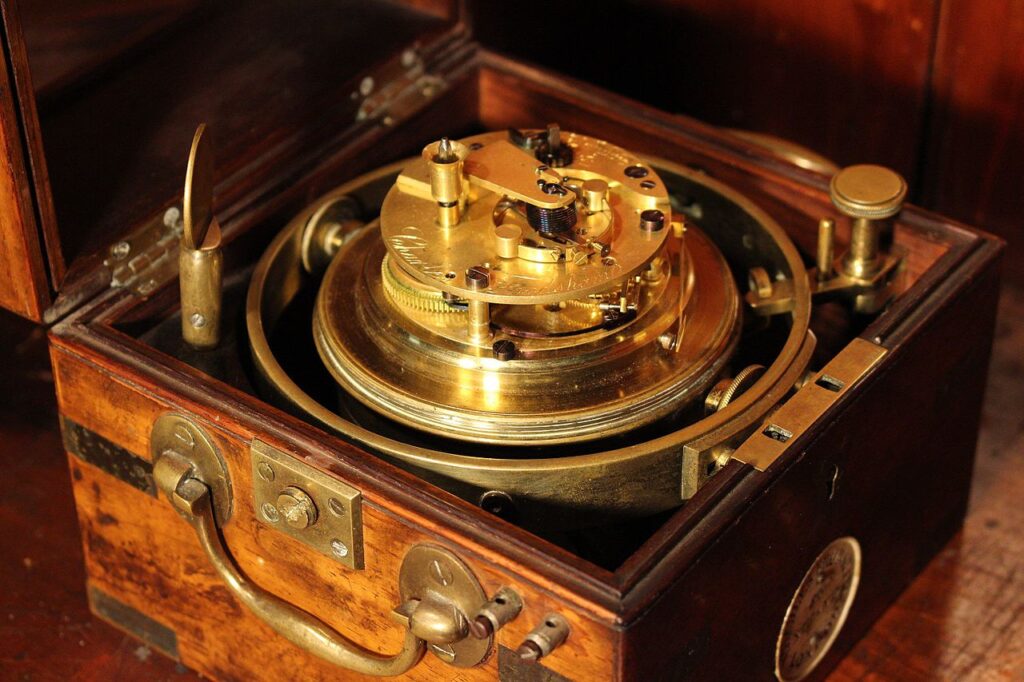
This marine chronometer, made about 1912, was a precision time-keeping instrument used for determining longitude at sea. Its rarity stems from the fact that many chronometers were lost in shipwrecks, damaged by sea environment or removed from their gimbals over time. Recent data suggest marine chronometers from the early 1900s in good condition can fetch around US $2,000 to $4,000 depending on maker and history. Original box, key, and accurate movement increase its collectible value. The movement and dial should still show fine work and maker’s name.
It is worthy of display because it encapsulates the scientific challenge of navigation in the early 20th century. Chronometers were among the most important tools aboard ships for safe and accurate voyages. When placed in a showcase, it invites curiosity about how sailors charted the seas before modern GPS. It blends craftsmanship, science and travel history. For a viewer it stands as a symbol of the technical and human endeavours of maritime exploration.
Brass Yacht Fog Horn

This brass yacht fog horn, produced around 1903, was used on private vessels to signal in low-visibility conditions and heavy fog. Its rarity arises because atmospheric corrosion and replacements made many originals vanish or get refashioned. Listings cite similar early-20th-century fog horns at roughly US $300 to $600 for standard pieces, though rare makers or large sizes could be higher. The intact brass body, original mouth-piece and period mounting hardware make this one stand out. The age, patina and maritime marking contribute to provenance.
From a display perspective it illustrates an aspect of maritime safety and signalling technology from the era. The object invites discussion about navigation hazards, communication at sea and small-craft yachting in the early 1900s. Its size and design make it visually engaging, suitable for a maritime gallery or themed exhibit. It bridges leisure boating and technical marine gear of its time. For a collection, it offers a less common piece with both functional and narrative appeal.
Ship’s Log Wheel and Engine Order Telegraph
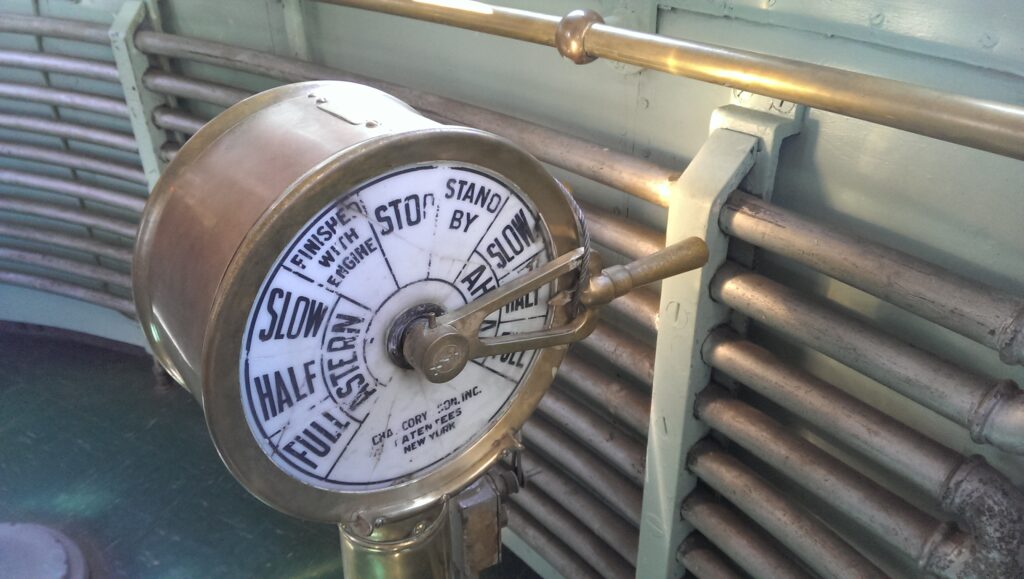
This engine order telegraph wheel assembly onboard a steamship around 1906 communicated speed orders between bridge and engine room, and surviving units with original brass faceplates and indicator pointers are quite rare. Examples in good condition can reach roughly $3,500 to $6,000 in the collector market because many were scrapped when ships were updated or decommissioned. The rarity is increased when the faceplate bears the original ship’s name or serial-number plate from the manufacturer. The mechanical condition, good patina and intact mounting hardware significantly affect value. The industrial aesthetic and connection to early 20th-century steam power contribute to its appeal.
This piece is worth displaying because it shows how maritime operations functioned before digital systems and highlights the human-machine interface aboard a ship. Its large size and moving parts give it visual interest and make it a focal object for a collection or gallery. When viewers see the brass dial and pointer they can imagine the bridge officer shouting Full ahead and the engine room responding. It links navigation, propulsion and ship architecture in one object. For those interested in maritime heritage the object offers both story and form.
Large Copper Ship’s Bell
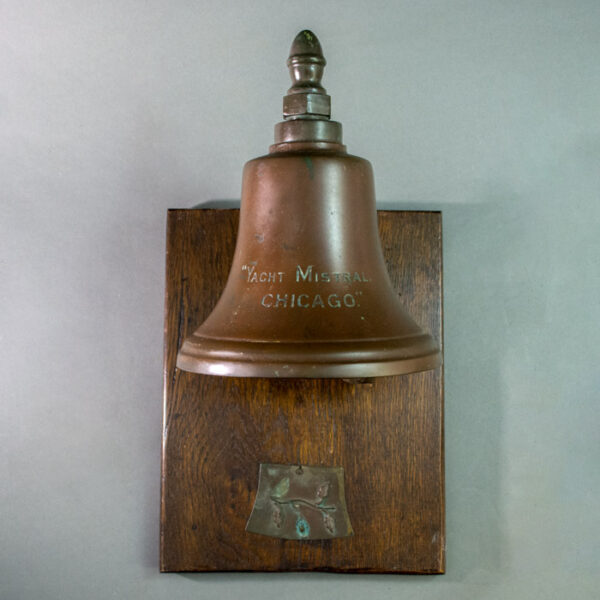
This copper ship’s bell, dated around 1904 and used on merchant or naval vessels of the period, is rare because many bells were melted down for reuse or replaced when ships were modernised. The auction records show such bells in the range of $1,200 to $2,200 depending on inscriptions, provenance and size. A bell with ship’s name, manufacturer stamp or original mounting bracket adds to authenticity and value. The rich tone, heavy casting and weathered finish lend it character. Its survival in a condition where the inscription remains legible is uncommon.
What makes the bell worth display is the way it evokes life aboard ship: daily watches, fog signalling, port arrivals and ceremonial ringing. It serves as a tactile and audible symbol of maritime culture at the turn of the century. Mounted on a wall or stand it becomes both decorative and historically meaningful. The copper metalwork gives rich colour and texture that catches the eye. For collectors or institutions it adds atmosphere and a direct link to seafaring life.
Brass Ship’s Engine Room Pressure Gauge

This brass-mounted engine room pressure gauge, manufactured around 1910 for steam-powered vessels, is rare because many gauges were either replaced or lost when ships were overhauled over the decades. Examples in good order are typically valued about $400 to $900, though gauges with maker’s name, calibration plate or ship-identification number may go higher. The original glass face, calibrated dial and pointer all matter greatly. The simple industrial style, functional purpose and survival through harsh marine conditions contribute to its appeal.
The gauge is worth display because it reveals the backstage side of maritime operation where engineers monitored steam and pressure under tough conditions. Understanding how ships were powered adds depth to maritime exhibits. Its visual language of brass, glass and numbers offers historical texture. It’s small enough for multiple pieces to display yet strong in story. For a nautical collection the gauge adds a technical component often overlooked.
Solid Brass Ship’s Porthole with Storm Cover
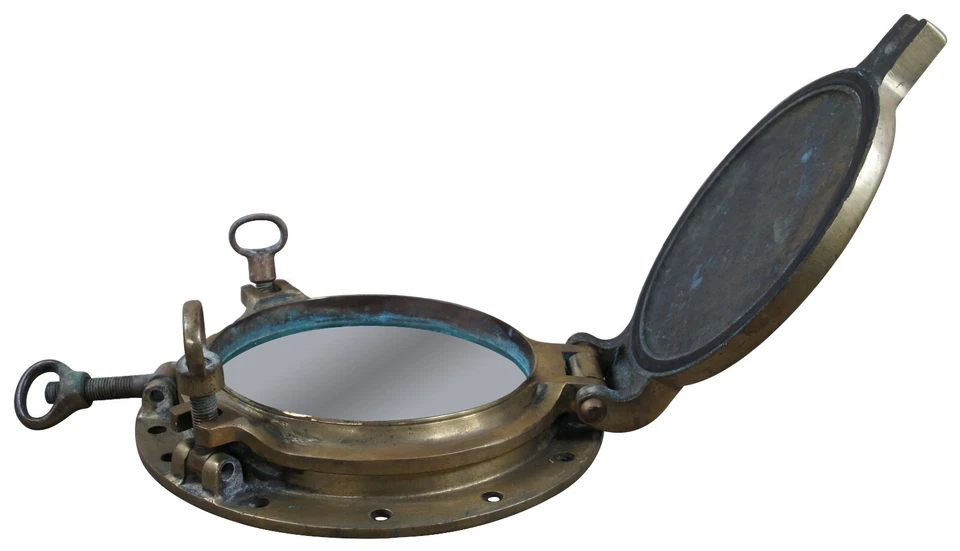
This porthole from about 1909 features a solid brass frame, inner glazing, storm cover and original mounting ring. It is rare because many portholes were replaced with newer frames or lost in ship scrapping, and ones that survive with all components intact command higher interest. The market value for a well-preserved piece can range between $1,500 and $3,000 depending on diameter, maker’s stamp and provenance. The presence of original bolt holes, glass intact and functioning hinge or cover make a difference. The patina of brass and weathering from sea air also add authenticity.
It deserves display because a porthole offers a literal window into seafaring life at a time when ships were slowly modernising. Viewers recognise it and can imagine cabins, rocky seas and horizon views. Its circular form and solid brass draw attention and can serve as a decorative focal point as well as historical object. The technical detail of frame, glass and storm cover speaks to maritime engineering. Including it in an exhibit helps tie the human experience aboard ship with material technology of that era.
Nautical Ship’s Clock (Marine Chronometer Wall-Mount)
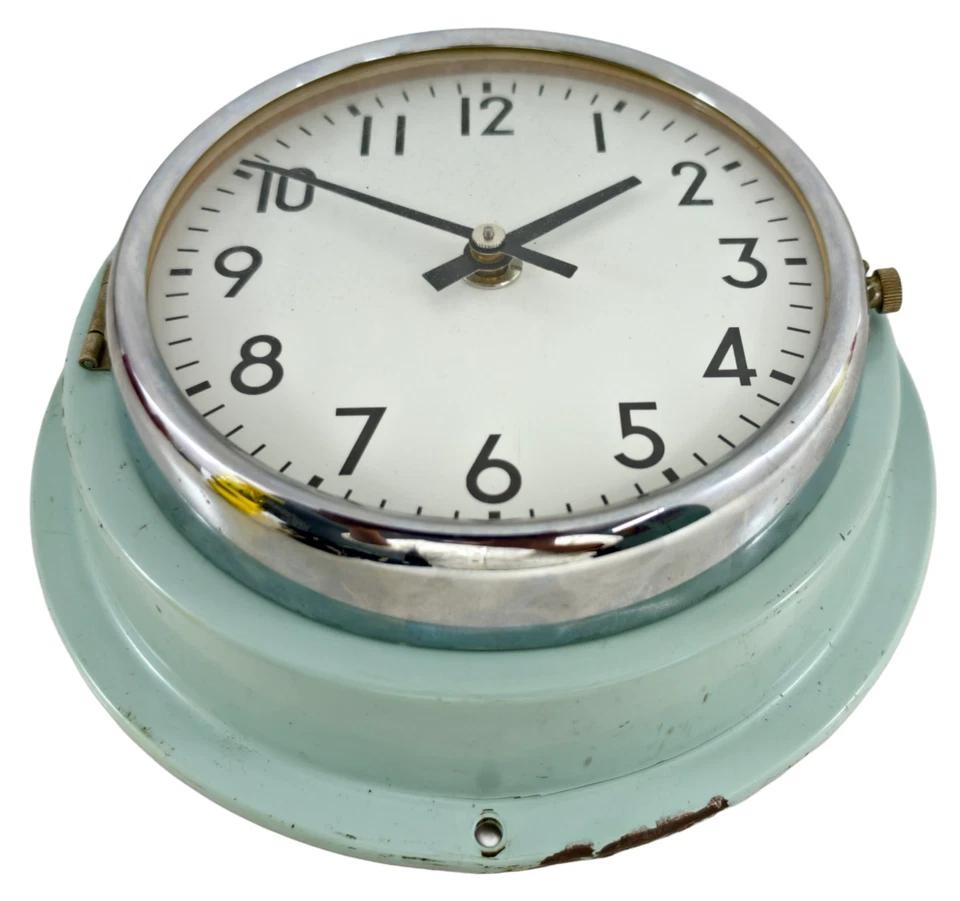
This wall-mount ship’s clock, dating around 1908, was used in ship’s cabins or chart rooms to keep standard time at sea and is rare because many were replaced or removed during refits and few retain their original cases or maker’s markings. Similar clocks in good original condition can fetch approximately $1,000 to $2,000 in auction markets. The presence of original brass dial, maker’s name, serial number and ship’s name increases value. The condition of the movement and case matter greatly.
It deserves display because keeping accurate time was essential for navigation and coordination aboard ships of the early 20th century. The clock’s face, hands and case reflect mechanical precision and maritime routine. In an exhibit the clock helps show the discipline and engineering behind seafaring schedules and sea watches. Its polished brass surface draws the eye and gives a sense of history that is immediate. For maritime collectors it works as both utility item and museum-style display piece.
Antique Ship’s Steering Wheel (Wood and Brass)

This steering wheel made around 1907 blends wood and brass, and is rare because few original wheels remain in situ, and many complete wheels were removed when ships were refitted or lost in ship-wrecks. Market estimates place well-preserved examples at around $2,000 to $4,500, with higher values when the wheel retains its mounting column or original ship-plate. The craftsmanship of the wooden spokes, brass boss and wear from usage all contribute to interest. The provenance to a specific vessel or shipyard increases value significantly.
It is display-worthy because the wheel is an iconic symbol of navigation, human control and maritime tradition. Hang it on a wall or mount it on a stand and it occupies space in a way that commands attention. It serves as a centerpiece in many maritime exhibits because of its scale and immediate recognition. The combination of wood grain, brass sheen and worn edges give it visual and tactile strength. For anyone appreciating sea-faring history this wheel ties story, technology and culture together.
This article originally appeared on Avocadu.
